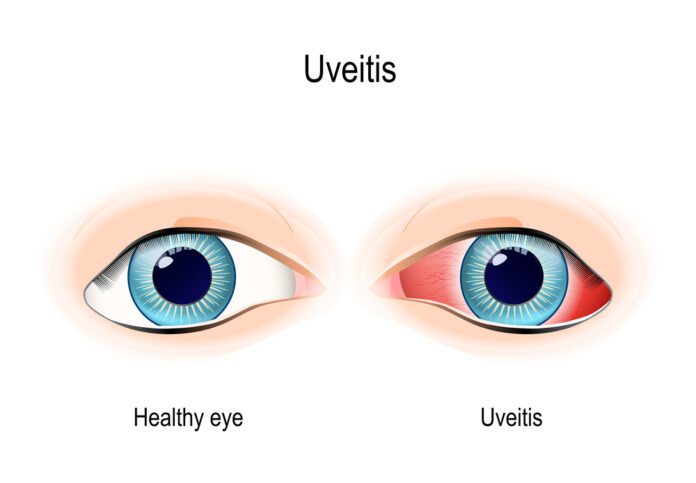Overview Of Noninfectious Uveitis
Noninfectious uveitis is eye redness that is most often due to swollen or dilated blood vessels. This makes the surface of the eye look red or bloodshot.
Causes
Bloodshot eyes appear red because the vessels at the surface of the white portion of the eye (sclera) become swollen.
Vessels may swell and cause noninfectious uveitis due to:
- Eye dryness
- Too much sun exposure
- Dust or other particles in the eye
- Allergies
- Infection
- Injury
Eye infections or inflammation can cause redness as well as possible itching, discharge, pain, or vision problems. These may be due to:
- Blepharitis: Swelling along the edge of the eyelid.
- Conjunctivitis: Swelling or infection of the clear tissue that lines the eyelids and covers the surface of the eye (the conjunctiva). This is often referred to as “pink eye.”
- Corneal ulcers: Sores on the cornea most often caused by a serious bacterial or viral infection.
- Uveitis: Inflammation of the uvea, which includes the iris, ciliary body, and choroid. The cause is most often not known. It may be related to an autoimmune disorder, infection, or exposure to toxins. The type of uveitis that causes the worst red eye is called iritis, in which only the iris is inflamed.
Other potential causes of noninfectious uveitis include:
- Colds or allergies.
- Acute glaucoma: A sudden increase in eye pressure that is extremely painful and causes serious visual problems. This is a medical emergency. The more common form of glaucoma is long-term (chronic) and gradual.
- Corneal scratches: Injuries caused by sand, dust, or overuse of contact lenses.
- Sometimes, a bright red spot, called a subconjunctival hemorrhage, will appear on the white of the eye. This often happens after straining or coughing, which causes a broken blood vessel on the surface of the eye. Most often, there is no pain and your vision is normal. It is almost never a serious problem. Because the blood leaks into the conjunctiva, which is clear, you cannot wipe or rinse the blood away. Like a bruise, the red spot will go away within a week or two.



